 Photo by Deepanwita Gita Niyogi
Photo by Deepanwita Gita Niyogi
This exclusive photo-feature by Deepanwita Gita Niyogi showcases how in various districts across Jharkhand, sacred sites of Adivasis (indigenous people) related to worship and burial, as well as their unique cultural traditions are under threat due to political and social pressure, land acquisition and mining.
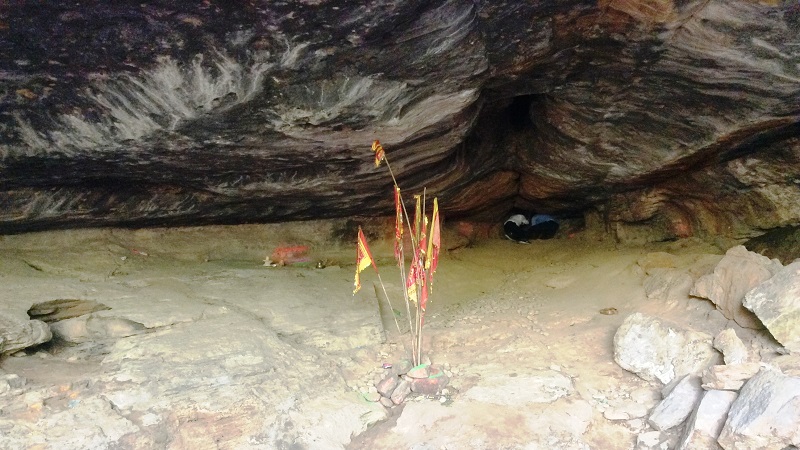 Photo by Deepanwita Gita Niyogi
Photo by Deepanwita Gita Niyogi
Isco village in Hazaribagh district of Jharkhand is dominated by Munda and Oraon tribes. It is famous for caves dating back to the Meso-Chalcolithic period and ancient rock art. Residents Phoolchand Oraon and Ilias Oraon informed that a famous cave called Marwateri found here is sacred. But mining in the Rohne coal block by the government-owned National Mineral Development Corporation (NMDC) in Barwania village, 12 km from Isco, will impact the cave and prehistoric paintings. NMDC bagged the project in 2019 and plans to start operations. Though Adivasis follow the sarna faith, non-Adivasi flags can be spotted inside the cave. Worship does not take place, but incense sticks are burnt, Phoolchand added.
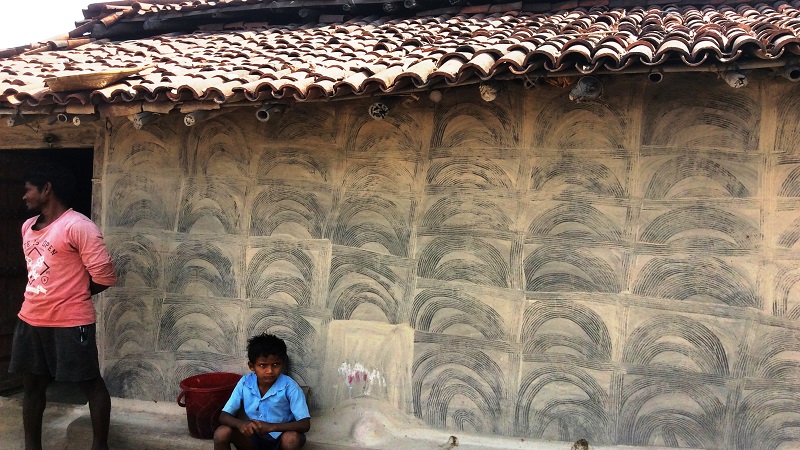 Photo by Deepanwita Gita Niyogi
Photo by Deepanwita Gita Niyogi
Khovar refers to the marriage mural art painted on mud walls of tribal houses mainly in Hazaribagh. Seen here is such a painting in Ursu village in Chatra district. Chando Kumari, an Oraon tribal, said women make it during Sohrai, a harvest festival. “The artists use black and white colours. However, Khovar is rarely made these days. It is on the decline and women paint only when they have adequate time.” Kumari said the paintings cannot be made on cement walls. But most houses in rural areas are switching over to brick and cement ones.
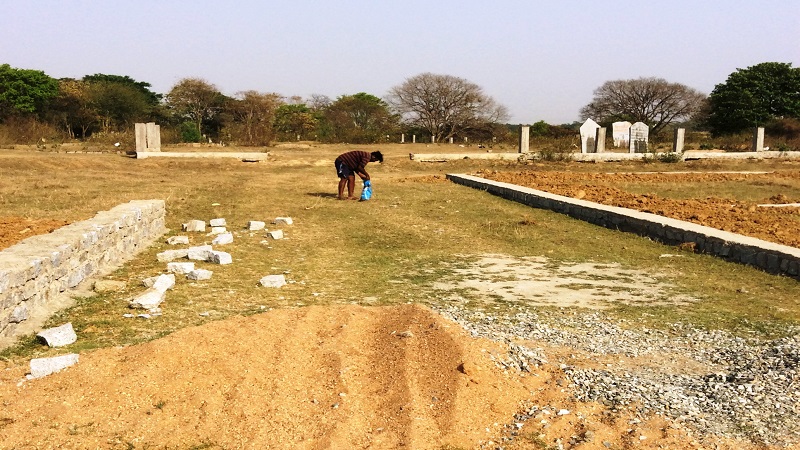 Photo by Deepanwita Gita Niyogi
Photo by Deepanwita Gita Niyogi
Mangtu Oraon of Ranchi showed around the tribal burial place of Chorwa Toli, which is under threat due to encroachment. “We are losing our lands. Tribals have sacred sites in every village but in some places, structures belonging to other religions have come up,” Oraon said. On visiting the place, activity earmarked for the construction of houses was observed. “Plots for houses have come up here. New constructions will be there around the masna sthal (burial place) and our site may vanish,” Oraon said.
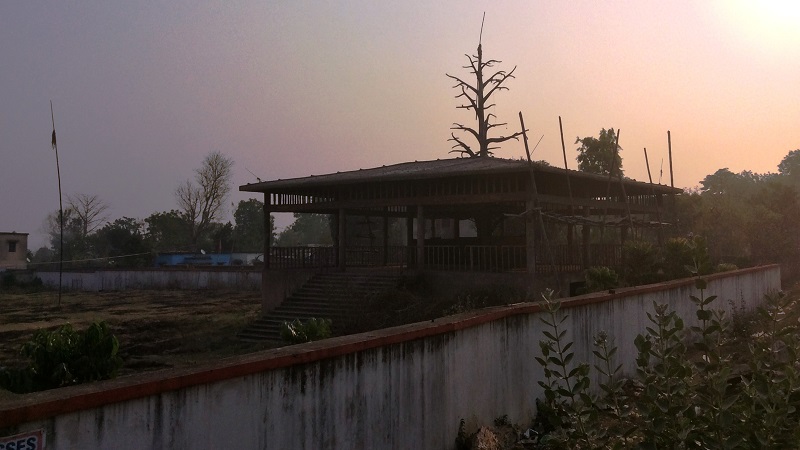 Photo by Deepanwita Gita Niyogi
Photo by Deepanwita Gita Niyogi
A sarna sthal or a sacred grove in Kanke area of Ranchi has been surrounded by a boundary wall. But many tribals feel that walls make these sites of Adivasi worship look like structures belonging to other faiths. “Many feel that such walls make these spaces lose their natural essence. Tribals are also being labelled as Hindus. Our people are not trying to understand the bigger issue, but there is a force at play,” said Abhay Minz, assistant professor, Department of Anthropology, Dr Shyama Prasad Mukherjee University, Jharkhand. However, the boundary wall is becoming indispensable too due to encroachment. “But there is a paradox. I am against the erection of proper temples,” added Minz.
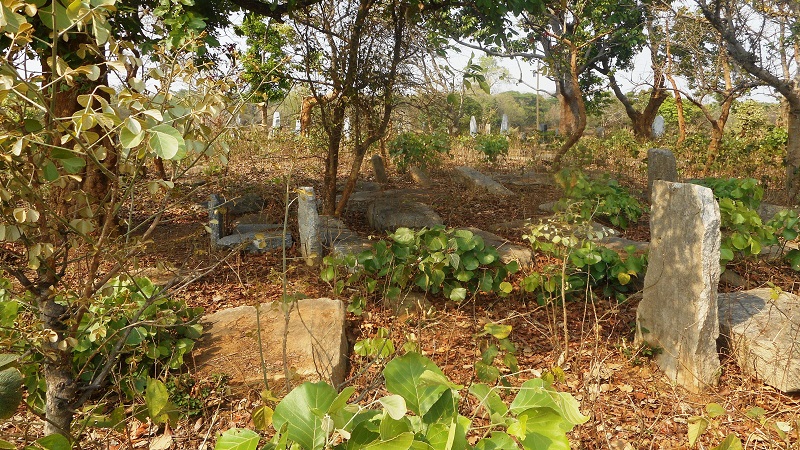 Photo by Deepanwita Gita Niyogi
Photo by Deepanwita Gita Niyogi
A burial ground belonging to the Munda Adivasi community at Hassa village in Khunti district of Jharkhand has been severely impacted due to the construction of a road running right through the middle of it, said social activist Durgawati Oreya. Villagers had protested at that time, she added. “We have to fight for our lands. The entire Adivasi samaj or society has to fight in a united manner,” said Oreya.
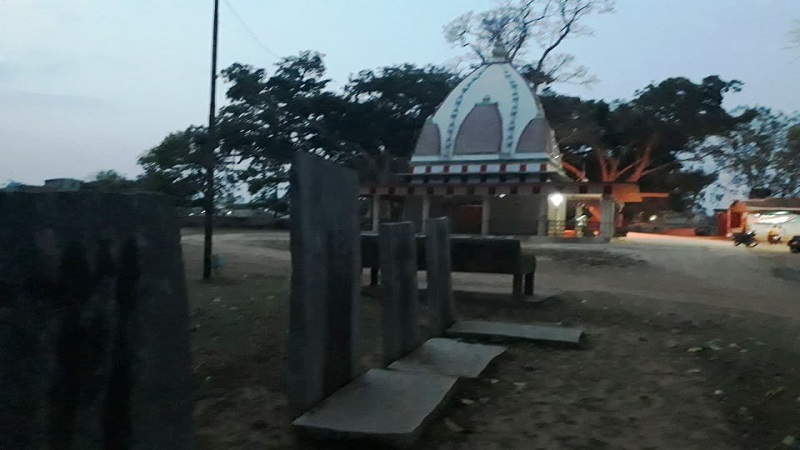 Photo by Deepanwita Gita Niyogi
Photo by Deepanwita Gita Niyogi
In Khunti, an ancient masna or Adivasi burial place with stones erected in honour of ancestors has been encroached upon due to a temple called the Mahadev Shiv Mandir. Temples have come up in many places, said Oreya, adding, “It is an old and historic place for us. But our culture and tradition are being ruined.”
 Photo by Deepanwita Gita Niyogi
Photo by Deepanwita Gita Niyogi
A dumping yard has come up on a masna or burial site in Pipratoli, Khunti. “In this way, we will lose all our places. There are sacred stones under the rubble. Even land in villages is getting acquired,” Oreya said.
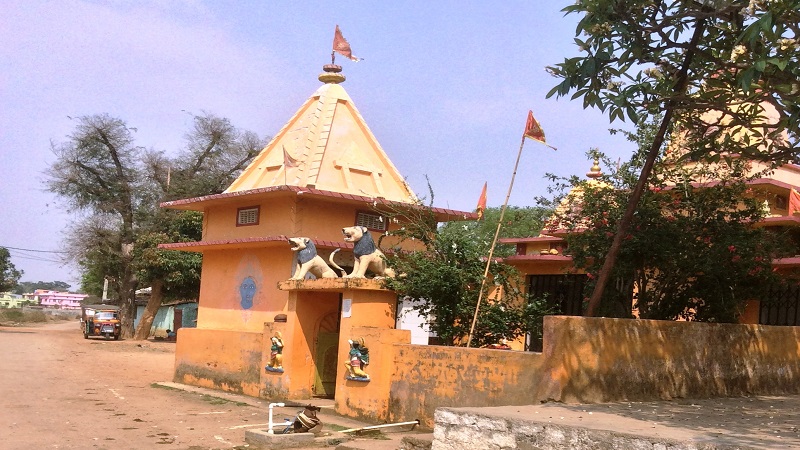 Photo by Deepanwita Gita Niyogi
Photo by Deepanwita Gita Niyogi
In Raja Kunjla, Khunti, tribals have been worshiping the Devigudi traditionally, but a temple has come up. Oreya pointed out that the tribal tradition has been broken here. “We should take a stand on such things. In future, we may be displaced and our lands snatched due to more developmental pressure,” said Ram Munda, a resident of Raja Kunjla. Munda added that Adivasi lands are being acquired and encroached upon. Oreya said, “Some people from our community also remain silent and do not register any protest. The Devigudi worship used to be offered to ensure that illnesses do not plague tribal communities.”
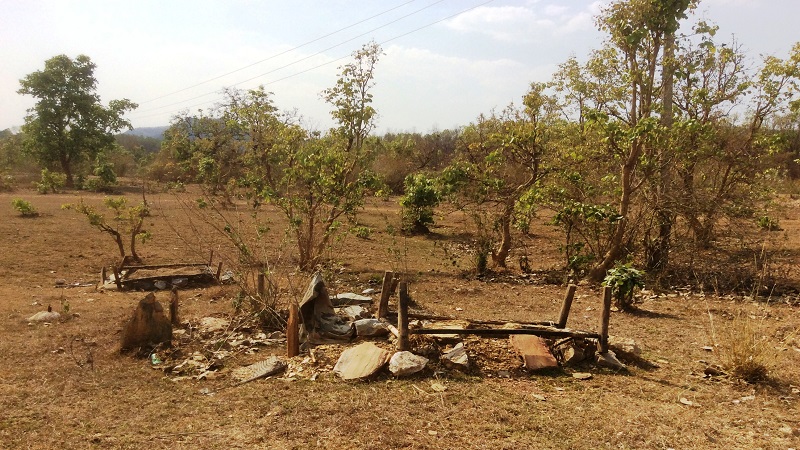 Photo by Deepanwita Gita Niyogi
Photo by Deepanwita Gita Niyogi
In East Singhbhum’s Bhuridih village, this sacred place is called jaherathan or grove where the Bhumij community’s Maghburu puja is held once a year. The deceased are buried here as well. Residents said the Jharkhand Urja Sancharan Nigam Limited wants to erect a power substation here forcefully and had also laid barbed wires on the ground with the help of police six to seven years ago. Resident Kartik Sardar said villagers are opposed to the substation. Local resident Rajkumar Sardar informed that the protest had broken out and is still on. “The company has not built the substation due to continued agitation. Our identity matters.”
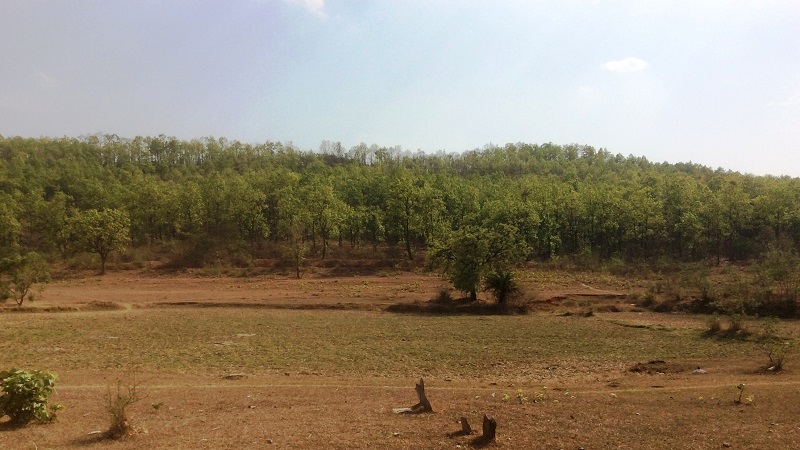 Photo by Deepanwita Gita Niyogi
Photo by Deepanwita Gita Niyogi
Bhuridih has rich forest cover full of sal, mahua and chironji trees. It is called the Gare Dungri Forest. “Only after the Maghburu puja, people can plough lands,” said guide and social worker JayPal Singh. The puja is done to mark the establishment of the village.
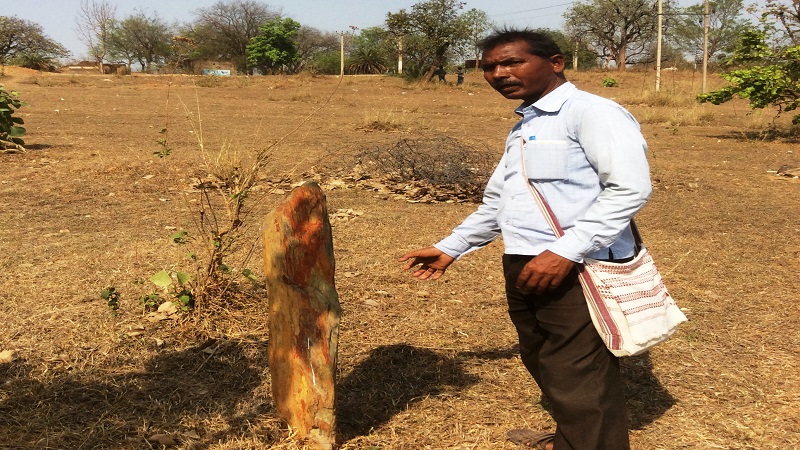 Photo by Deepanwita Gita Niyogi
Photo by Deepanwita Gita Niyogi
Seen here is a horotopa or an erect stone slab to mark burials in Bhuridih. Notice the mass of wires lying nearby.
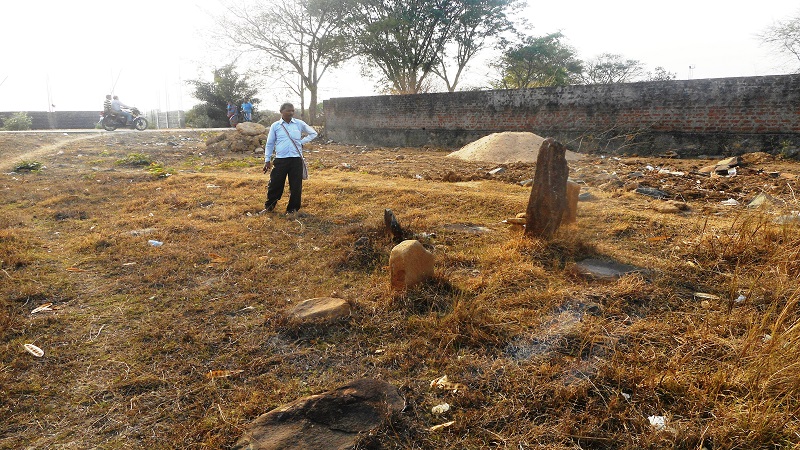 Photo by Deepanwita Gita Niyogi
Photo by Deepanwita Gita Niyogi
A Bhumij community uksasan or asthi kalash (pot burial under stone slabs) is under threat in Pata Hesal village of Seraikela-Kharsawan district. The main road passes alongside, linking with a highway and it has become wide. “The road may widen and the site may vanish,” said tribal activist Sudarshan Bhumij. Bones are buried here after cremation.
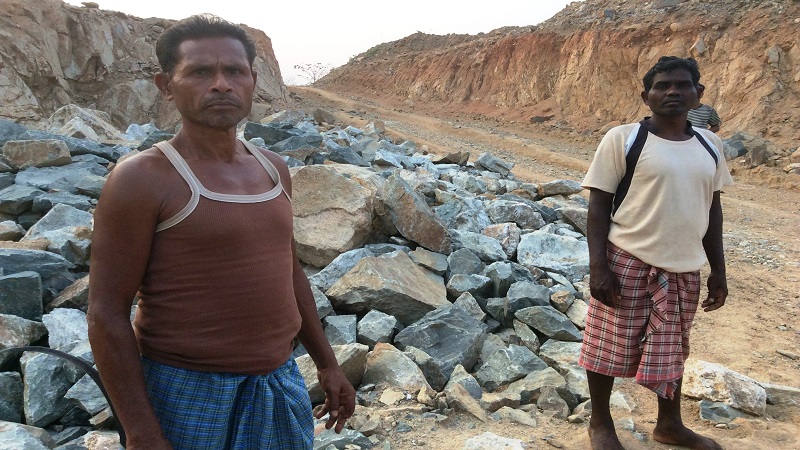 Photo by Deepanwita Gita Niyogi
Photo by Deepanwita Gita Niyogi
In Nachosai village of East Singhbhum, burial ground or masna and a sacred place of worship are under threat due to stone quarrying. But due to local protests, work has now been stalled for the past eight months. Work started in 2018 by Shree Om Metals Pvt. Limited, as per residents Sarveshwar Mahakud and Gautam Sardar. An akhara or tribal dancing ground is also here. “We are not disturbed now, but have to remain alert. There were many trees like sal and mahua which were cut down due to stone quarrying,” said Mahakud. The lease area totalled about 10 acres of land and was valid till 2028.
*This photo feature has been produced in collaboration with the Pulitzer Center for Crisis Reporting.
Related: